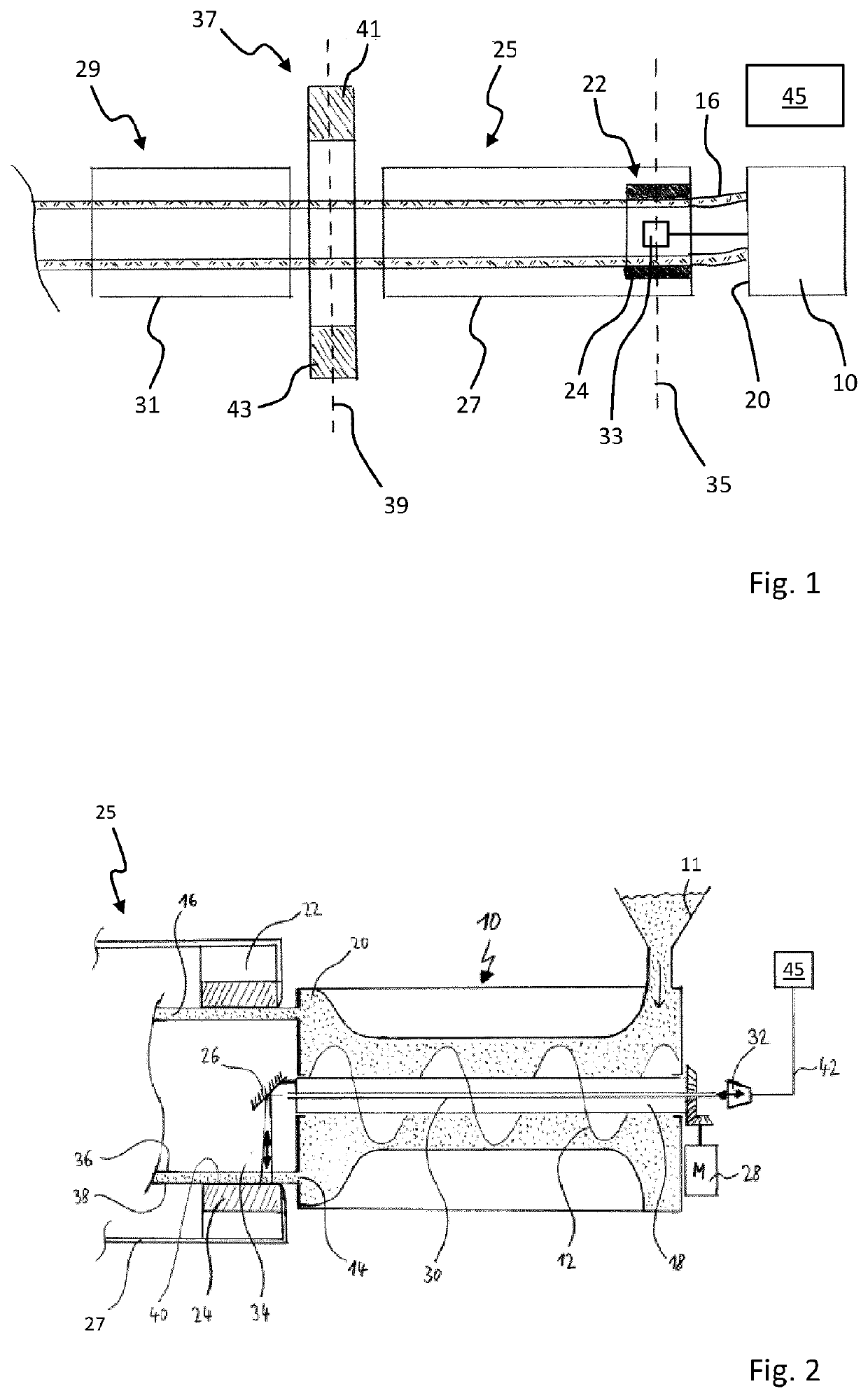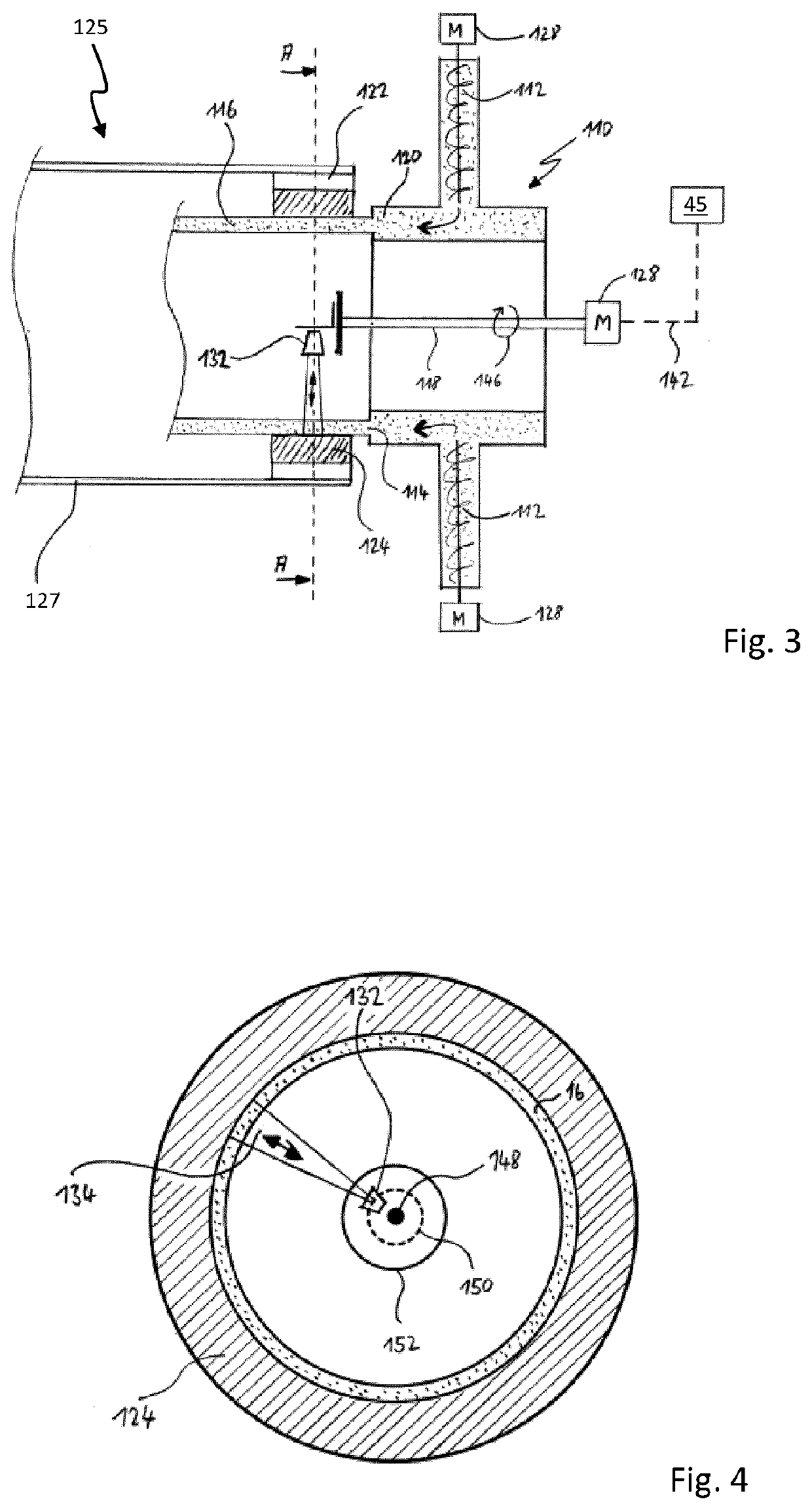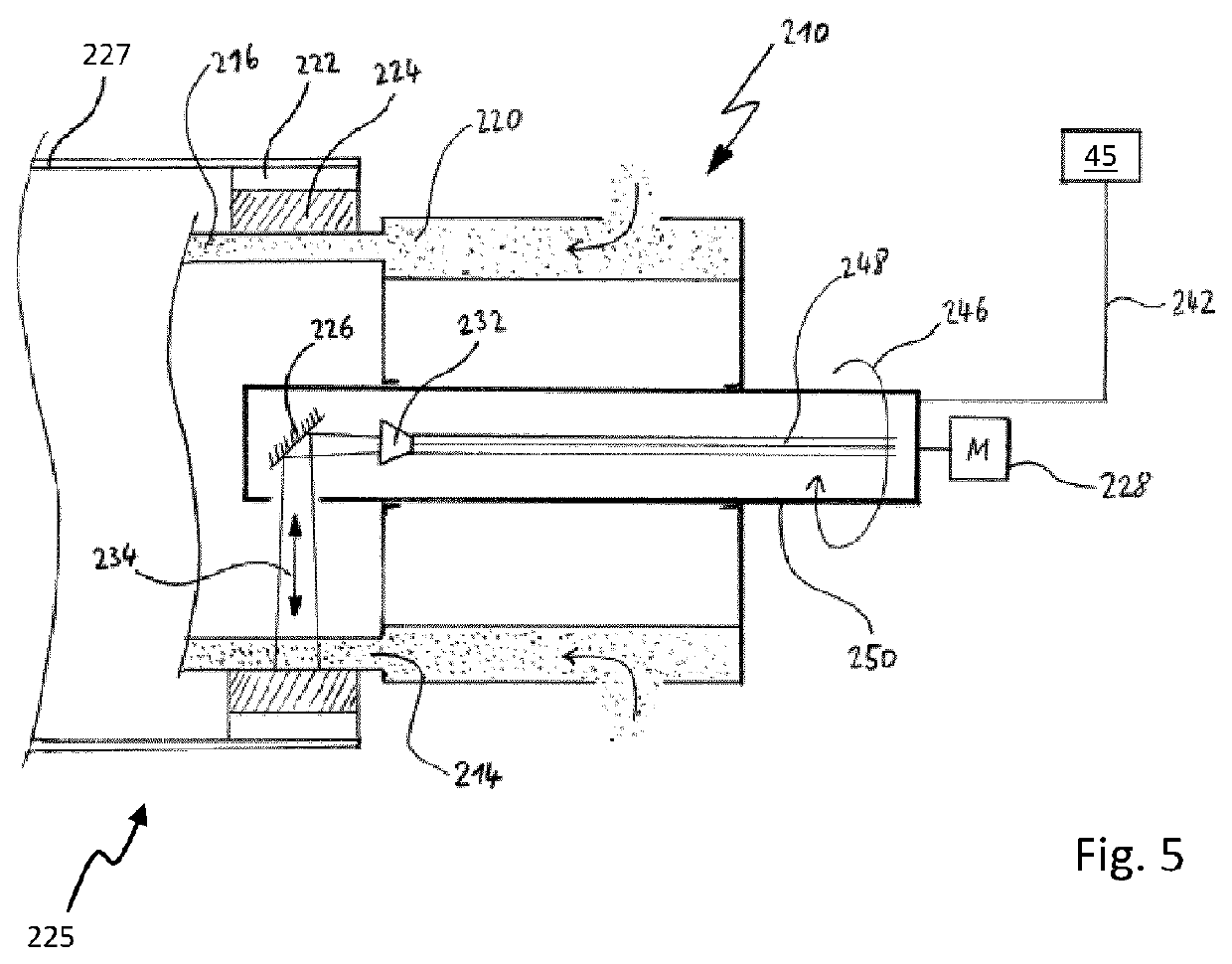Method and device for measuring a tubular strand
a technology of tubular strands and calibration devices, which is applied in the direction of instruments, investigating moving fluids/granular solids, and other domestic objects, can solve the problems of significant scrap in the interim, defocusing the effect of the outer surface of the strand, and the tubular strand can still deviate significantly from the specific final geometry of the calibration devi
- Summary
- Abstract
- Description
- Claims
- Application Information
AI Technical Summary
Benefits of technology
Problems solved by technology
Method used
Image
Examples
Embodiment Construction
[0045]FIG. 1 shows an extruder 10 for extruding a tubular strand 16. In a manner known per se, the extruder 10 possesses a supply 11 for supplying the plastic material to be processed, which is shown for example in FIG. 2. The plasticized plastic material is extruded by an extruder screw 12 out of an annular gap 14 into a tubular strand 16. A rotationally driven central shaft 18 runs within the extruder screw 12. In the shown example, a calibration device 22 directly adjoins the extruder head 20 and has a metal calibration sleeve 24 against which the extruded strand 16 is pressed by means of a vacuum. The reference number 25 also shows a first cooling section 25 with a first cooling tube 27 in which a conducted cooling of the tubular strand 16 is carried out in such a way that the strand 16, after emerging from the first cooling section 25, has substantially concluded its shaping. Following the first cooling section 25 is a second cooling section 29 having a second cooling tube 31, ...
PUM
| Property | Measurement | Unit |
|---|---|---|
| outer diameter | aaaaa | aaaaa |
| wavelength | aaaaa | aaaaa |
| circumference | aaaaa | aaaaa |
Abstract
Description
Claims
Application Information
 Login to View More
Login to View More - R&D
- Intellectual Property
- Life Sciences
- Materials
- Tech Scout
- Unparalleled Data Quality
- Higher Quality Content
- 60% Fewer Hallucinations
Browse by: Latest US Patents, China's latest patents, Technical Efficacy Thesaurus, Application Domain, Technology Topic, Popular Technical Reports.
© 2025 PatSnap. All rights reserved.Legal|Privacy policy|Modern Slavery Act Transparency Statement|Sitemap|About US| Contact US: help@patsnap.com



